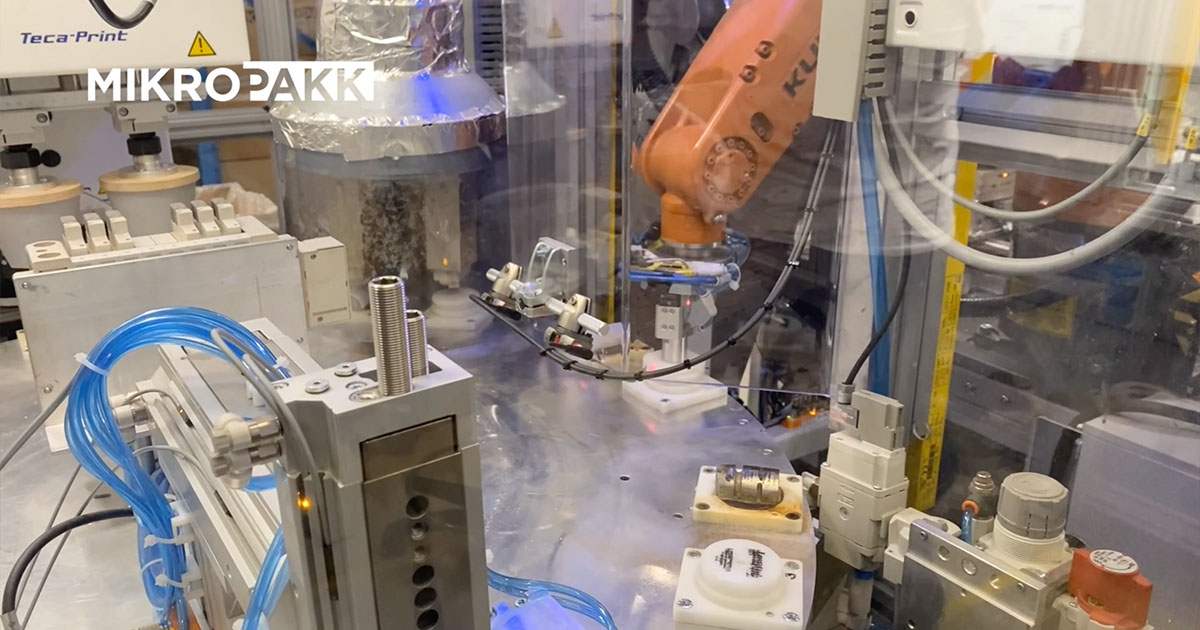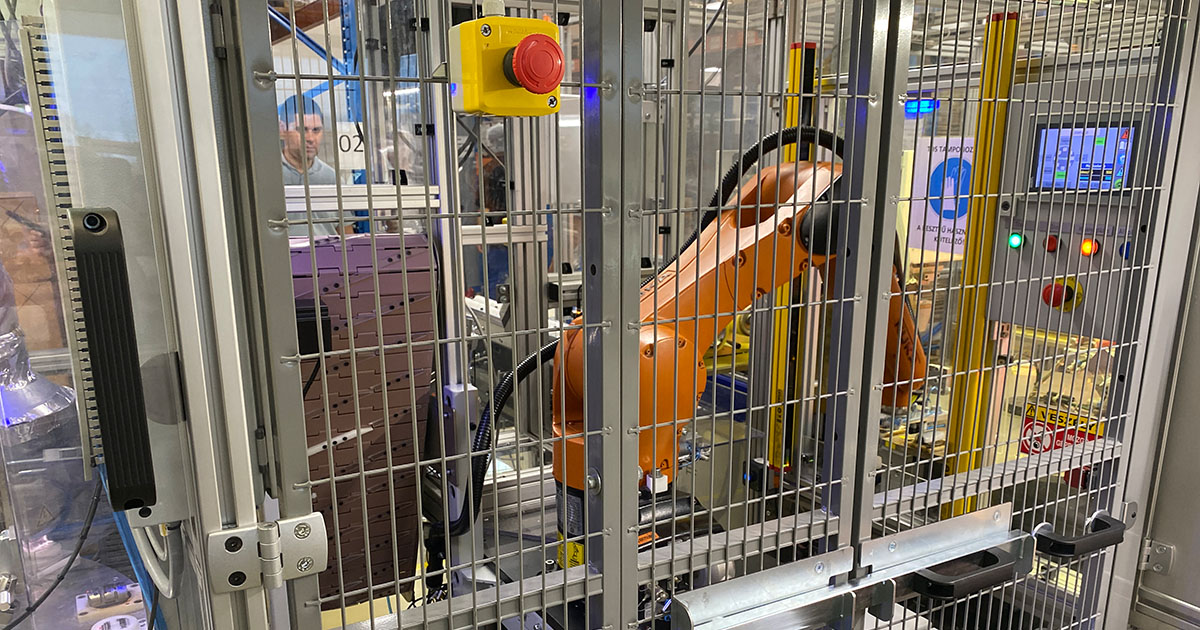Product quality can be ensured by different assembly technologies. Handcrafted products and well-organised mass production can both result in high quality but with different costs and target markets. Achieving high quality is not always cheap and may not be suitable for every market.
At Mikropakk, we strive for continuous development, and to maximise customer satisfaction, we build custom manufacturing lines. Our production solutions include manual, semi-automatic, and fully automated assembly and decoration, making it scalable according to demand.
In this article, we present the transition from a semi-automatic assembly line to a fully automated one due to increased demand. You will read about:
- how different assembly technologies can ensure product quality,
- when to fully automate the assembly process, and
- how to replace operators with robot cells.
Various assembly techniques can ensure product quality
High quality can be achieved through the manual work of skilled craftsmen, as well as partially or fully automated assembly lines. However, price and market conditions also play a significant role in the decision-making process when selecting a manufacturing method.
Our production sites specialise in precision component manufacturing, prototyping, and mass production. We optimise the manufacturing process of each product specifically in terms of
- efficiency,
- unit cost, and
- cycle time.
Therefore, we also use semi- or fully automated assembly lines during the production process.
Injection molding and automated assembly can be seen as issues of economies of scale, as injection molded products are typically intended for price-sensitive markets. Both technologies involve high tooling costs, as the production of good-quality injection molds and the acquisition and programming of robots required for automated assembly lines are costly processes.

Fully automated assembly for increased product demand.
When is it worthwhile to fully automate assembly?
Full automation is an option that should be considered when there is a constant increase in product demand. The example of the assembly and decoration of the Lenzetto menopause hormone spray illustrates when it is worthwhile to switch to a fully automated assembly line for a product.
We have previously detailed the steps involved in the semi-automated assembly of the product and its decoration by pad printing. In this case, an operator places the injection-molded components on the jigs of a rotary table, that is followed by plasma treatment of the product surface and its decoration by integrated pad printing. To protect the applicator surface, the product is coated with foil, followed by ultrasonic welding of the packaging container.
In the semi-automated assembly process, an operator performs the inspection of the finished product and places the closing cap. In response to the increased demand for the product, automation was introduced and the tasks of the operators were replaced by robot cells.

Fully automated assembly line with robot cell
Replacing operators with robot cells
The process of injection molding and operation of the pad printing machine remained unchanged during the development. New Kuka robots take over monotonous operator tasks by picking up the injection-molded components from the conveyor.
Accurate system design is essential for the efficient operation of the robots, including the proper orientation and pacing of the incoming components on the conveyor.
In addition to inspection and adjustment, it is important to ensure that none of the machines run out of parts or overflow. As a result, the assembly process is completely automated, and our site can produce up to five million Lenzetto sprays annually.
Fully automated assembly at Mikropakk
We produce our plastic injection molded and blow molded products on various programmable assembly lines to achieve the most optimal value for money. At our Budapest site, we manufacture precision parts and focus on R&D&I projects, while our Salgótarján facility specialises in mass production.
Therefore, we always provide high-quality and customer-centric manufacturing services to our partners. With our flexible solutions, we can meet various quantity demands, whether you are looking to start small, medium, or large-scale production, feel free to contact us!
